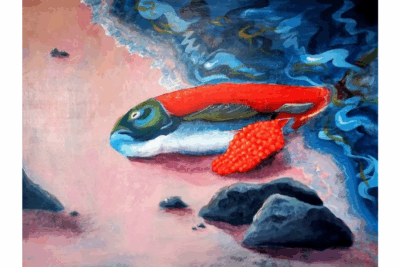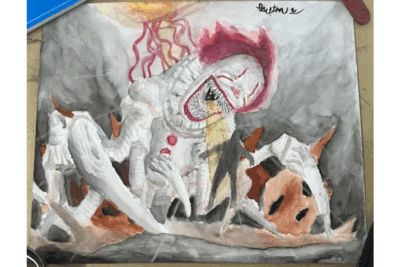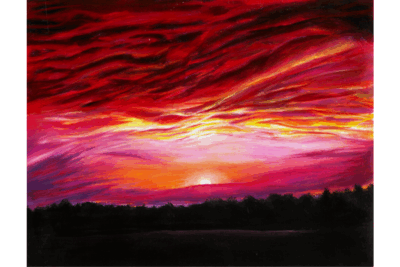The Goshen Theater Department’s 2020-2021 COVID-19 Season continues this upcoming weekend with “Orfeo ed Euridice.”
Composed by Christoph Willibald Glück in 1762, “Orfeo ed Euridice” is based on the Greek myth of Orpheus and Eurydice, in which Orpheus travels to the underworld to rescue his wife Eurydice after she dies of a snake bite. In the opera version of the story, love triumphs, and Orpheus is successful in his mission to save Eurydice.However, according to Amy Budd, assistant professor of theater, “Orfeo ed Euridice” didn’t always have a happy ending.
“[Orfeo ed Euridice] was a commission… for the name day party for the Austrian Emperor,” Budd said. “A tragic ending was not going to be appropriate for this party… so Glück changed the ending.”
The opera was filmed by Five Core Media. Kyle Hufford, associate professor of communication, acted as video professor. Cheyenne Harrison, student producer, helped with blocking for filming.
“We recorded the performances over that weekend that will be only gently edited by Five Core for streaming, because we wanted to create as much of a life performance for students as possible,” Budd said.
The production faced several challenges. The cast had to learn how to sing in Italian for Goshen College’s first all-Italian opera while also learning how to dance ballet in only nine weeks.
COVID-19 also created challenges. “One is that we cannot have groups singing in any given room for more than 30 minutes,” Budd said. Students went back and forth every 30 minutes to let the air clear while rehearsing. “We needed twice as much space to rehearse as we usually needed.”
Another COVID-19 challenge was masks. The music department supplied performers with resonance masks that pull the fabric away from the mouth while singing to allow sound waves rather than aerosol droplets through. Budd said that the masks are “hotter and more uncomfortable than regular masks.”
The resonance masks were a challenge for chorus members singing and dancing simultaneously.
Bek Zehr, a fourth year music major and theater minor, appreciated the chorus’ work. Zehr plays the titular character of Orfeo in this production, but has served in choruses of past shows. When not onstage, they enjoyed watching the chorus perform.
“They were huffing and puffing, they were definitely champs,” they said. “They did some of the hardest work.”
Zehr described the chorus as family-like.
“You really get to work off their energy,” Zehr said. “You always have people there to work with you.”
For their audition for “Orfeo ed Euridice,” Zehr sent in a submission tape featuring two opera pieces. One of the pieces was an aria, which Zehr describes as “the character express[ing] this one emotion that’s inside of them.”
Once Zehr was cast in the role of Orfeo, they immediately began practicing and writing translations into their score.
“I was also just as excited for the challenge of learning all that music and holding myself accountable to bring my A-game,” Zehr said.
One of the challenges Zehr observed throughout the rehearsal process was spacing.
“There were a lot of chorus members we had to put on stage,” Zehr said, “Our choreographer Tom Meyers… did a really good job spacing everyone out, while also making it look like a beautiful stage picture.”
Because people could not touch due to COVID-19 restrictions, chorus members held garlands between them to connect. Orfeo and Euridice, played by Kailey Rice, illustrated touch by holding a sash between them.
“In a way it wasn’t difficult, it was a new way to interact with people,” Zehr said. “It was kind of a new skill of being aware of your singing partners that was cool to work with.”
Orfeo’s harp music was provided by Kaliah Lefever, a second year English education major with a music minor. Scott Hochstetler, professor of music, asked her if she would be willing to join the orchestra for a few songs.
While Lefever did not need a resonance mask, she still had trouble with the masks while performing. “Trying to wear a mask and glasses at the same time to be able to read music is kinda challenging,” Lefever said.
Lefever is primarily in the first act. “When I was backstage I loved hearing the [chorus] singing,” Lefever said. “They learned ballet, too, so when I did get to be on stage I got to see them perform ballet. I just loved listening and seeing the chorus, and all the hard work they put in.”
Everyone involved looks forward to the airing of “Orfeo ed Euridice.”
“I had a really good time and I appreciate being included,” Lefever said. “It was a really cool thing to be a part of.”
“I really hope that people will watch it, and feel delighted, and refreshed and excited for spring,” Budd said. “And that they will get a sense of hope for the future by seeing what awesome work our students can do.”
“Orfeo ed Euridice” can be livestreamed on March 26 and 27 at 7:30 p.m. and March 28 at 2:30 p.m. via goshen.edu/livestream.


